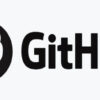
In the rapidly evolving world of blockchain technology, effective governance is crucial for maintaining transparency, security, and adaptability. Polkadot (DOT), a pioneering multi-chain network, exemplifies how governance can play a pivotal role in shaping and sustaining a blockchain ecosystem. This article explores the role of governance in Polkadot’s ecosystem, detailing its mechanisms, benefits, and impact on the network’s growth and stability.
Understanding Polkadot’s Governance Model
Polkadot is designed with a sophisticated governance framework that empowers its community and stakeholders to participate in decision-making processes. This decentralized governance model ensures that the network can adapt to changes, address issues, and implement upgrades in a transparent and efficient manner.
Key Components of Polkadot’s Governance
Polkadot’s governance system consists of several key components, each contributing to the overall functionality and effectiveness of the network:
1. DOT Holders
- Voting Power: DOT holders have the right to participate in network governance by voting on proposals and changes. This participatory approach ensures that decisions reflect the interests and preferences of the broader community.
- Staking and Delegation: DOT holders can stake their tokens to support the network’s security and participate in governance. Delegation allows them to vote indirectly through representatives, enhancing accessibility and engagement.
2. Council
- Elected Representatives: The Council is a body of elected representatives responsible for proposing and vetting changes to the network. Council members are chosen by DOT holders through a democratic election process.
- Proposal Review: The Council reviews and approves proposals submitted by the community, ensuring that only well-considered changes are implemented. They play a crucial role in maintaining the quality and relevance of proposed upgrades.
3. Technical Committee
- Expert Input: The Technical Committee consists of experts and developers who provide technical insights and recommendations for network upgrades and improvements.
- Implementation Support: The committee assists in the implementation of approved proposals, ensuring that technical changes are executed effectively and efficiently.
4. Referenda
- Community Voting: Referenda are formal voting processes that allow DOT holders to vote directly on significant proposals and changes. This mechanism ensures that major decisions are made with the consensus of the community.
- Proposal Submission: Any DOT holder can submit a proposal for consideration through the referendum process. This inclusivity encourages a diverse range of ideas and solutions.
Benefits of Polkadot’s Governance Model
Polkadot’s governance system offers several key benefits, contributing to the network’s stability, transparency, and adaptability:
1. Decentralization
- Distributed Decision-Making: By involving DOT holders, the Council, and the Technical Committee in decision-making, Polkadot ensures that governance is decentralized and not controlled by a single entity. This approach promotes fairness and reduces the risk of centralization.
- Community Engagement: Polkadot’s governance model actively engages the community in the decision-making process, fostering a sense of ownership and involvement among stakeholders.
2. Transparency
- Open Processes: Governance processes in Polkadot are transparent, with proposals, voting results, and decisions publicly accessible. This transparency builds trust and accountability within the network.
- Public Proposals: All proposals and their statuses are visible to the community, allowing stakeholders to track progress and provide feedback.
3. Flexibility and Adaptability
- Responsive Upgrades: Polkadot’s governance system allows the network to quickly adapt to changes and emerging trends. Proposals for upgrades and improvements can be submitted and reviewed in a timely manner, ensuring that the network remains relevant and effective.
- Continuous Improvement: The ability to vote on and implement changes ensures that Polkadot can continuously improve and address issues as they arise, maintaining its position as a leading blockchain platform.
4. Security and Stability
- Rigorous Review: The involvement of the Council and the Technical Committee in reviewing proposals helps ensure that changes are thoroughly vetted before implementation. This rigorous review process contributes to the network’s overall security and stability.
- Community Oversight: The direct involvement of DOT holders in voting and decision-making adds an additional layer of oversight, enhancing the network’s resilience against potential issues.
Real-World Impact of Polkadot’s Governance
Polkadot’s governance model has had a tangible impact on the network’s development and success:
1. Network Upgrades
- Successful Implementations: Polkadot has successfully implemented several upgrades and improvements through its governance system. These upgrades have enhanced the network’s performance, scalability, and functionality.
- Community-Driven Changes: Many of the changes and upgrades have been driven by community proposals, reflecting the network’s responsiveness to stakeholder needs and feedback.
2. Conflict Resolution
- Consensus Building: The governance model facilitates consensus-building among stakeholders, helping to resolve conflicts and address issues in a constructive manner.
- Effective Dispute Resolution: The transparent and inclusive nature of the governance system supports effective dispute resolution and ensures that all voices are heard.
3. Innovation and Growth
- Encouraging Innovation: Polkadot’s governance system encourages innovation by allowing diverse proposals and ideas to be considered. This inclusivity fosters a dynamic and evolving ecosystem.
- Supporting Ecosystem Development: The governance model supports the development of new projects and applications on Polkadot, contributing to the growth and expansion of the network.
Conclusion
Polkadot’s governance model plays a crucial role in shaping and sustaining the network, offering a decentralized, transparent, and adaptable approach to decision-making. By involving DOT holders, the Council, and the Technical Committee in governance processes, Polkadot ensures that the network remains responsive to changes, maintains its security, and supports continuous improvement.
For developers, investors, and stakeholders, understanding Polkadot’s governance system is essential for navigating the network’s ecosystem and contributing to its future success. As Polkadot continues to evolve, its governance model will remain a key factor in driving innovation and fostering a robust and dynamic blockchain environment.









